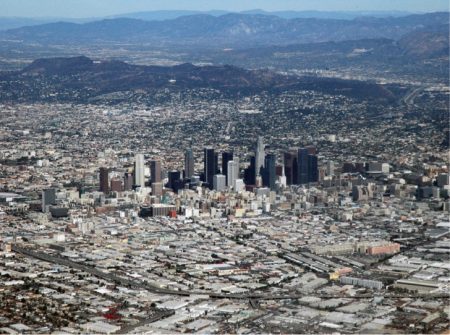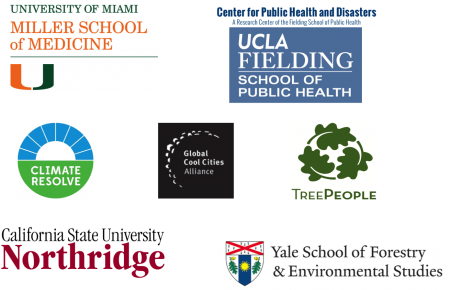Helping to Demonstrate the Benefits of a Cooler Los Angeles as a Model for Other Cities
The Los Angeles Urban Cooling Collaborative (LAUCC) is a unique national partnership between nonprofit groups, universities, government agencies and other experts in urban heat with the aim of achieving a cooler, more prosperous, and healthier Los Angeles by addressing current and future challenges posed by urban heat. By mid-century, average temperatures in Los Angeles are expected to rise by 3 to 7°F. Heat stress driven by this kind of warming is associated with many negative health outcomes, including premature death, which is expected to become more common as the planet continues to warm. These effects are particularly pronounced in highly urbanized areas like Los Angeles.

The LAUCC brings together policy and implementation experts, world-class research institutions and others to empower communities, city officials, and other key stakeholders to act on the urgency and realize the full value of robust planning today for a cooler city tomorrow.
The LAUCC Strategy
To realize the opportunities of a cooler Los Angeles, LAUCC will:
- Quantify the health impacts of installing reflective roofs and vegetation at the neighborhood level with original research.
- Demonstrate the real-world impact of these strategies in select Los Angeles communities. Deliverable: Community-scale demonstration projects in one to three neighborhoods.
- Leverage existing relationships with city officials and other stakeholders to ensure that these cool strategies are prioritized in city and utility policymaking.
This cutting-edge research will produce a framework that will be shared nationally with decision makers and stakeholders, community health organizations, NGOs, and urban forestry groups.
LAUCC is seeking funding and partners interested in tackling the challenge of urban heat and create a climate-resilient Los Angeles. Please contact Kurt Shickman (kurt at globalcoolcities.org) if you are interested in learning more!
Partners include:

